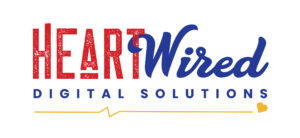Google warned us, yet few paid attention or even knew what they were talking about, what even is a favicon?
Recently, as Google does periodically, they rolled out some changes to the way we search, or at least the way they want us to. As they explained, especially when it comes to mobile search, they want websites to be easily identified and scannable. One way of implementing this was to utilize the ever so common favicon.
So what does that even mean?
For starters, a favicon is a small image icon that represents a website or at least should. Granted there are plenty of websites that are out there that are unidentifiable in this manner and are missing said icon. If you or your web designer failed to add a favicon to your site, perhaps with Google’s prompting now is the time.
What should a favicon be exactly you ask. Well generally speaking it should be something that is a representation of either your logo or theme. This enables users to quickly recognize your site over others when either searching or in their bookmarks.
How do I best resize my logo to make a favicon?
Depending on your web application or theme, it may suggest a specific size recommendation to upload. Usually, a minimum would be 16×16 pixels to 48×48. It can also be a good practice to use various sizes so that they format and scale appropriately on different devices. That being said, best practice is to not necessarily use a 16×16 size as Google will rescale it to that size anyway.
What kind of file should the favicon be?
You can use a JPG, GIF, or PNG for most browsers without any issue. However, best practices would be to use the ICO file format to ensure all browser compatibility.
What is an ICO?
An ICO is an image file that is formatted specifically for computer icons in Microsoft Windows. ICO files can contain one or more images of different sizes, depths, and colors for appropriate scaling on various browsers and device sizes.
How can I create an ICO?
There are numerous ICO converters online that can create ICO favicon files for you for free. Many of these converters require you to set the parameters of the file sizes that you want, otherwise, they default to 256 pixels which is the maximum size. It is best practice as mentioned previously to incorporate a few variations of image sizes in the favicon file for your website.
Next steps for SEO with Favicons
According to Google the favicons and the homepage in which they reside must be crawlable. Favicons should be a representation of your brand and easily identifiable. Also, make sure that the icon is not offensive in any way or Google will set it back to a default image icon. Google has already begun penalizing sites without appropriate favicons that go against their guidelines.
If you do not currently have a favicon on your site, we might suggest that you either create one yourself, contact your designer, or of course we are happy to help as well. Google is constantly making changes to the SEO algorithms, especially when it comes to mobile searches. The next step beyond mobile search will be voice search, which we will address in an upcoming post.
Did you enjoy this content? We would love it if you could share it with your friends, and let us know your thoughts. Be sure to subscribe so you don’t miss out on any future content we provide.
